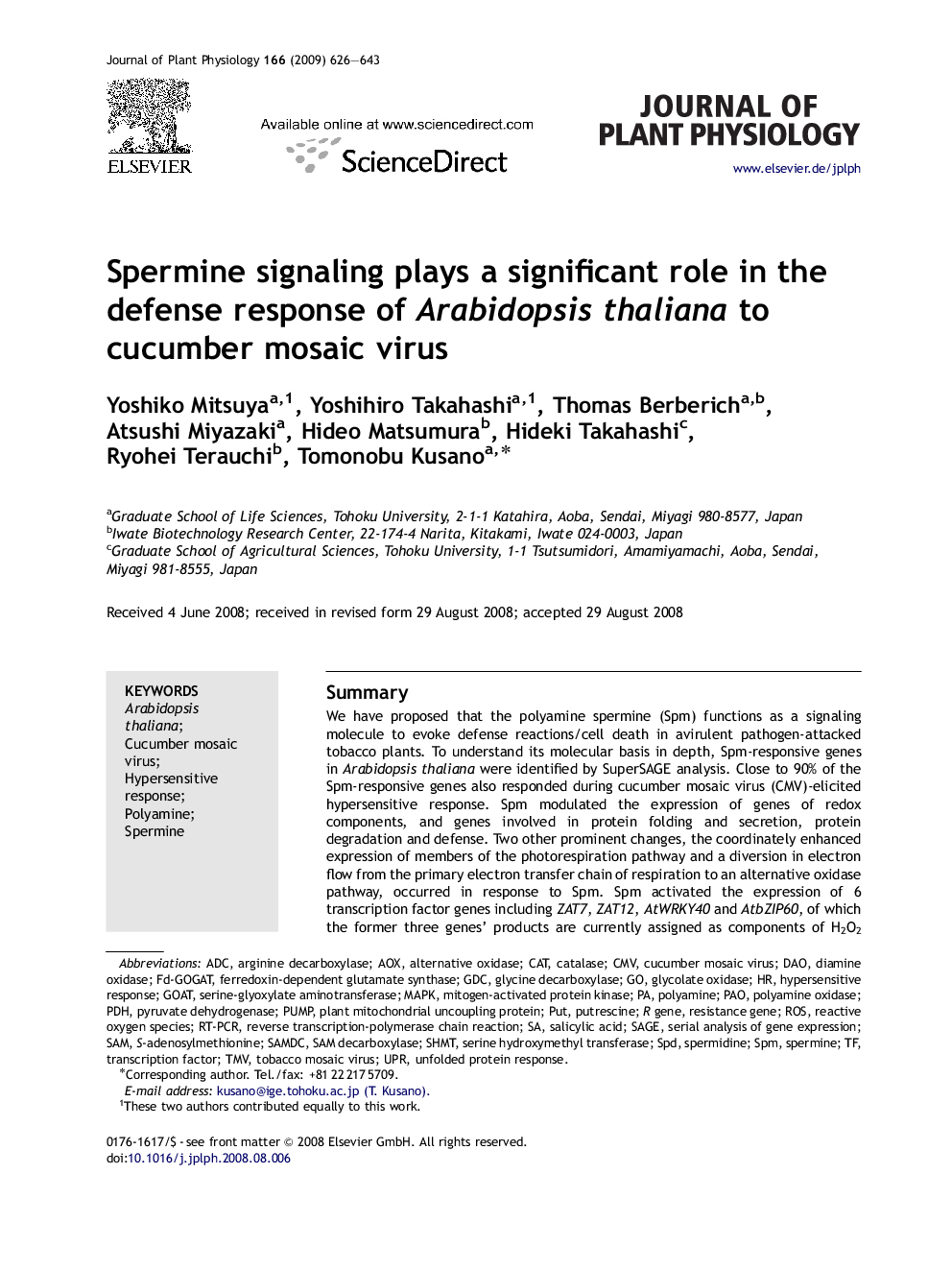| Article ID | Journal | Published Year | Pages | File Type |
|---|---|---|---|---|
| 2057307 | Journal of Plant Physiology | 2009 | 18 Pages |
SummaryWe have proposed that the polyamine spermine (Spm) functions as a signaling molecule to evoke defense reactions/cell death in avirulent pathogen-attacked tobacco plants. To understand its molecular basis in depth, Spm-responsive genes in Arabidopsis thaliana were identified by SuperSAGE analysis. Close to 90% of the Spm-responsive genes also responded during cucumber mosaic virus (CMV)-elicited hypersensitive response. Spm modulated the expression of genes of redox components, and genes involved in protein folding and secretion, protein degradation and defense. Two other prominent changes, the coordinately enhanced expression of members of the photorespiration pathway and a diversion in electron flow from the primary electron transfer chain of respiration to an alternative oxidase pathway, occurred in response to Spm. Spm activated the expression of 6 transcription factor genes including ZAT7, ZAT12, AtWRKY40 and AtbZIP60, of which the former three genes’ products are currently assigned as components of H2O2 signaling pathway, suggesting the involvement of H2O2 in Spm-triggered responses. Since AtbZIP60 plays a proven master role in the unfolded protein response in Arabidopsis thaliana, it may function to control the expression of genes participating in protein folding and secretion, which were mentioned above. Spm induction and CMV-triggered up-regulation of the genes described mainly coincided and their induction was suppressed by inhibitors of Spm oxidation. Furthermore, treatment with those inhibitors prior to CMV inoculation allowed higher viral multiplication in Arabidopsis thaliana plants. These results support the existence of a Spm-signaling pathway in Arabidopsis thaliana and its significant role in defense against CMV.
